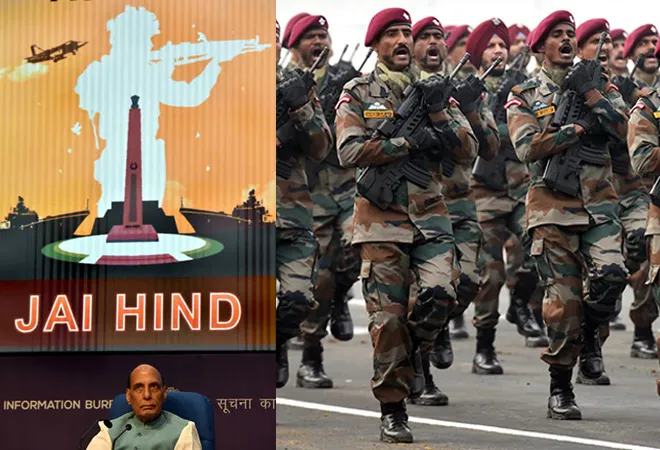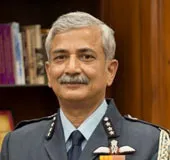-
CENTRES
Progammes & Centres
Location
The success of this new scheme can only be gauged once it has been implemented and tweaked over time.

This piece is part of the essay series, The Agneepath Scheme: Radical or Irrational?
All transformational changes run into resistance, and when it concerns the keepers of the military instrument of a nation’s power, the resistance is inevitable, especially since it impacts national security. But the world over, militaries have transformed due to the changes in geopolitical dynamics, altered security paradigms, shifting national interests, and budget realities. The strident views of the veteran community on the Agniveer concept reflect their deep concern for a profession to which they had committed a significant part of their lives. Each arm of the military has its own core competencies and capabilities and brings an array of options to the table, and therefore the new model of recruitment will affect each service differently.
The strident views of the veteran community on the Agniveer concept reflect their deep concern for a profession to which they had committed a significant part of their lives.
Given the technology-intensive character of air power, and the molecular level of technology dependency of the Indian Air Force’s (IAF) operations in peace and war, the impact of the scheme is of immense importance. Notwithstanding the real and perceived challenges, the public articulation of the IAF leadership in the media has been distinctly measured, balanced, and confident. It is evident that the service has taken the scheme as a window of strategic opportunity. The reason for this is that if military aviation does not keep pace with the swift changes in technology, it will rapidly lose its combat relevance. The pace of technology changes for modern air forces, which once was over a decade, has drastically reduced to a few years. In the professional life of over four decades, one has experienced dramatic changes in combat platforms, weapons, systems, and avionics. Along with the absorption of newer technology, changes in combat precepts, concepts of operations and tactics, have run concurrently with swift changes in training content and requirements, to stay relevant in air warfare. The sheer pace of change is, therefore, much more rapid in both scope and magnitude in the IAF, making it extremely adaptive and flexible to it. Also, the multitude of aircraft types, systems, weapons, and equipment, both of western and Russian origin, necessitates the air warriors to be both tech-savvy and tech-absorbent. The young are adept at adapting to rapidly changing technology cycles, therefore, it makes sense to have a younger air force. But while it has embraced the new scheme which enables it to lower the age profile, it is not without challenges.
Along with the absorption of newer technology, changes in combat precepts, concepts of operations and tactics, have run concurrently with swift changes in training content and requirements, to stay relevant in air warfare.
The air force leadership has taken efforts to explain in the open media and within the organisation the extensive steps it has initiated to integrate the younger generation, without any compromise or depletion of its combat capability. The IAF operates on a model somewhat akin to the Formula One racing community, where the young highly trained crew at the pit stops carry out refuelling, change of tyres, adjustments, and repairs at incredible speeds of under-five seconds assisted by technology and excellent training, while the back-end maintenance shops comprise of the more experienced and older crew members. The flight lines are where the aircraft is prepared, operated and turned around in between details. The efficiency and speed here are vital as it translates into minimum time on ground between missions, which means greater combat availability and greater combat sustenance. This first-line activity is where the young, tech-savvy and well-trained Agniveers are planned to be utilised under the close supervision of a few experienced air warriors. The back end, or the second and third line major repair and extensive periodic servicing activities which run simultaneously, will be manned by the experienced crew. All combat elements of radars, missiles, communication systems, etc., also follow the same model, and thus, enable effective utilisation of the lesser experienced youngsters in lower skill front-end tasks. The three organisational pillars of the IAF—operations, maintenance and administration are deeply embedded in an operational continuum simply because flying and air defence are 24x7 activities. Airfield support operations, flying environment safety activities, base security, IT and operational networks, techno-logistics, administrative functions, etc., are also areas of regular activity where Agniveers would be employed.
All combat elements of radars, missiles, communication systems, etc., also follow the same model, and thus, enable effective utilisation of the lesser experienced youngsters in lower skill front-end tasks.
In the inherently risky business of military aviation, the IAF is well aware that lives depend on the professionalism of its personnel. So how will these young bloods be inducted into this operations-intensive milieu of ‘very-little-to-no-room-for-mistakes’ activities? A transformational approach to all training is the basis. The pre-existing tech-intensive basic training of the IAF is being made more robust with a further infusion of technology and simulation, which allows for stringent preparation on the lower end of the skilled trades. This will be followed by graded skills training, based on individual aptitude and close monitoring of their demonstrated performance, both in peaceful and operational environments. The entry level, the training phase, and a performance review between the third and fourth year, provide three benchmarks of assessment for further continuation in service for the select quarter. At which stage the selected lot would be ready for a planned specialised training intervention for mainstream absorption. The Air force will induct the first batch by this year-end to be ready for absorption by mid-next year. In the first year, they will form two percent of the IAF’s personnel strength, followed by 10 percent in four years, and 25-30 percent in 10 years’ time. This is different from the 50 percent planned by the army and navy since their reserve liability is 15 years, whereas in the specialisation-intensive air forces it is 20 years. The strategy expects to produce a balanced force of young and experienced air warriors to enhance its overall combat worthiness.
The issue of the future of the young Agniveers after four years of their tenure, is really outside the jurisdiction of the services, as it has enough on its hands to adapt to the change while keeping its sword end sharp.
Some of the antagonists have uncharitably blamed the service leadership for having accepted the new model. The services are a disciplined and a responsible force, but acutely cognisant of the salience their combat readiness plays in national security. It is unfair and incorrect to assume that they would have accepted something which would in any way compromise it. Enough thoughts and efforts must have and will be expended on the scheme to shape its success. The Indian military remains a volunteer force, and endeavours to become a younger one while retaining its combat prowess. The issue of the future of the young Agniveers after four years of their tenure, is really outside the jurisdiction of the services, as it has enough on its hands to adapt to the change while keeping its sword end sharp. It is for the policymakers to assuage future concerns and address the aspirations of the youth. Employment opportunities will have to be innovatively created based on skills attained. For example, those leaving the IAF after four years would have legs to transit to the large civil aviation industry, where their hands-on experience will stand them in good stead. The percentage of retention may well be tweaked in the future, based on the analysed outcomes after giving the scheme a fair chance to roll out, settle down, and run. But the surprisingly swift lawless and violent firestorm of reaction, based on incomplete information, is unfortunate, to say the least. The root of discontent is more to do with the assurance and sinecure of a government job, and less to do with service to the nation. While the strategic communication with regard to the scheme may have been less than adequate, the extent of violence and over-reaction of the misguided young involved, unfortunately, indicates the unsuitability of their induction into the serious business of the military profession. The success of any transformational policy is gauged by the outcome it produces, as will in this case. Only time will tell.
The views expressed above belong to the author(s). ORF research and analyses now available on Telegram! Click here to access our curated content — blogs, longforms and interviews.

Air Marshal (Dr) Diptendu Choudhury is a former Commandant of the National Defence College at New Delhi. A fighter pilot with a vast experience in ...
Read More +